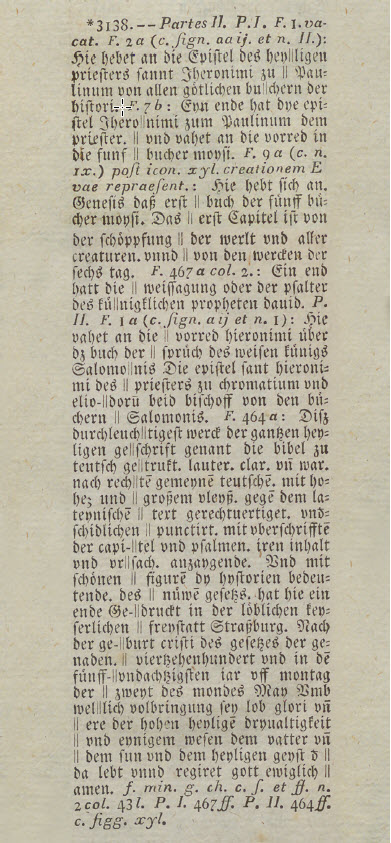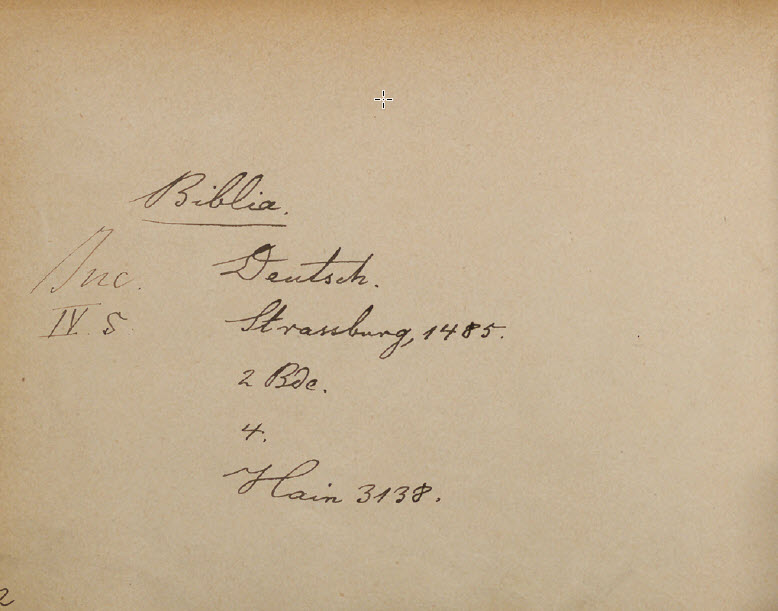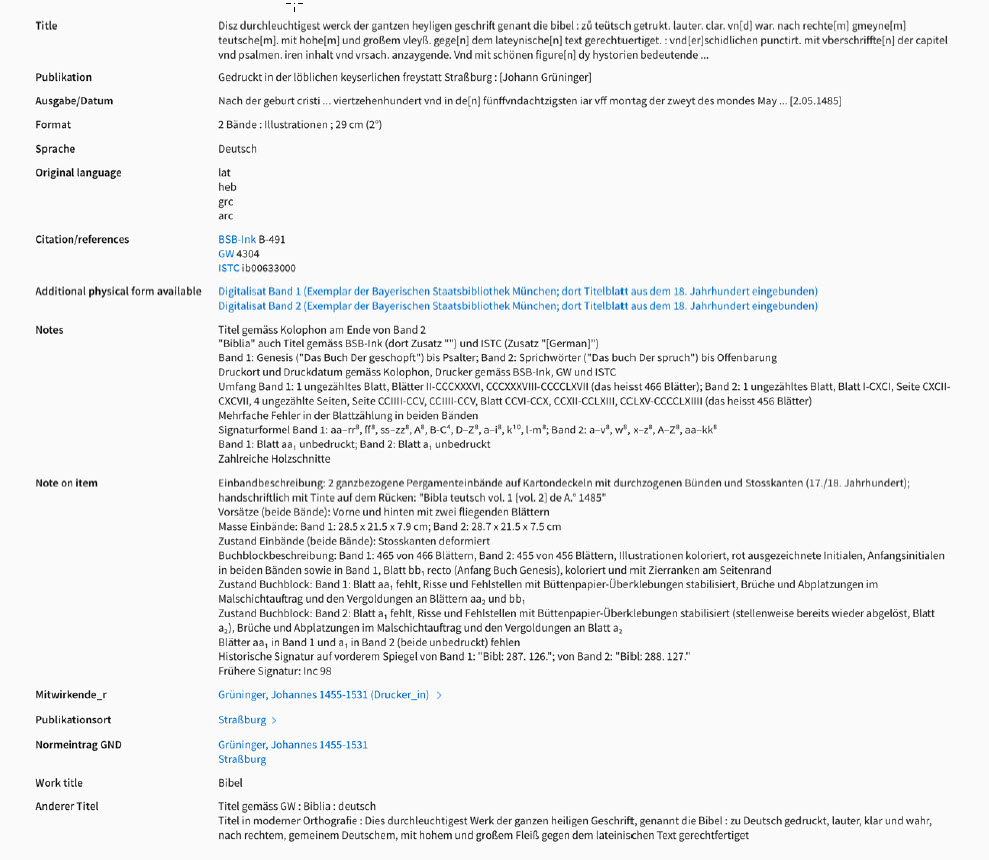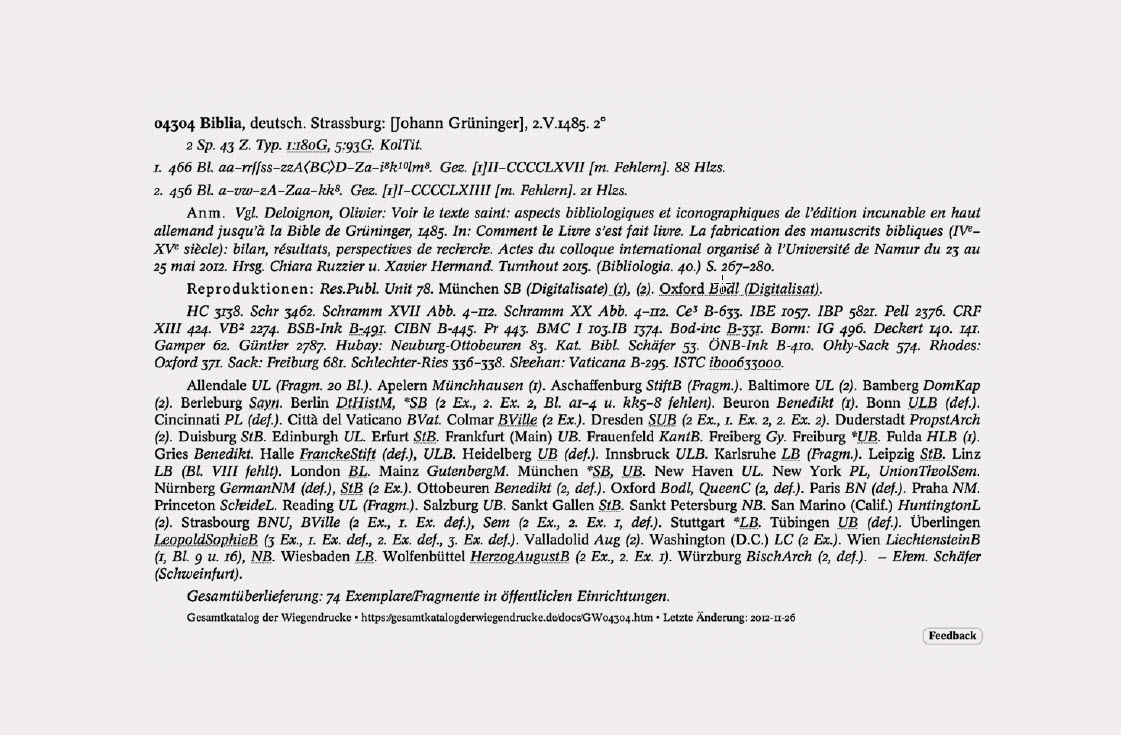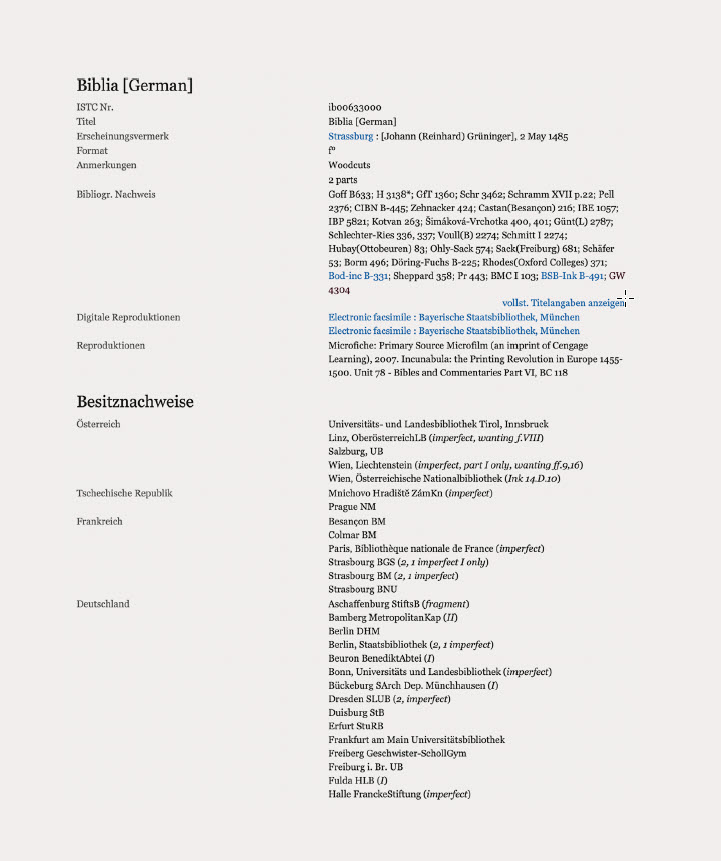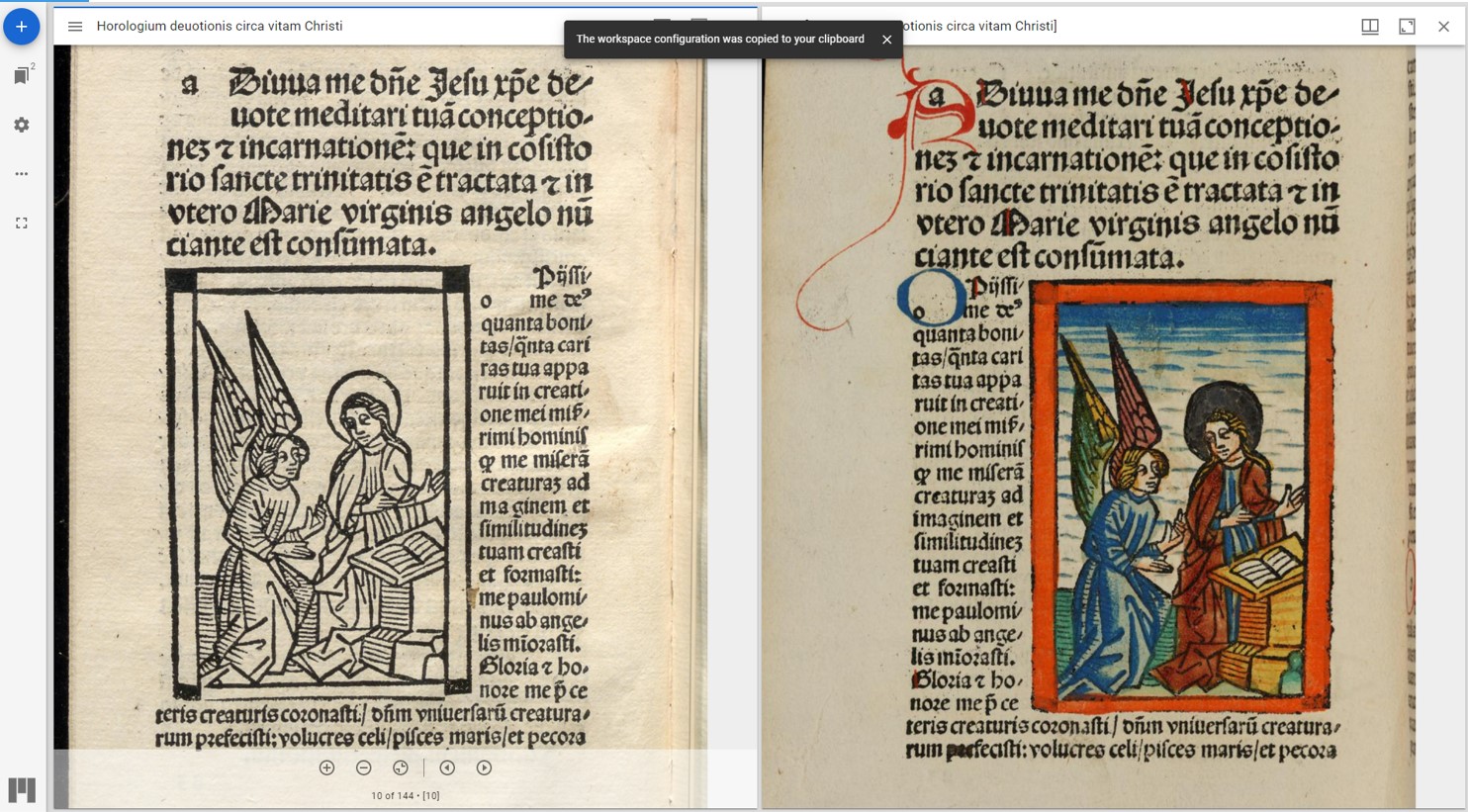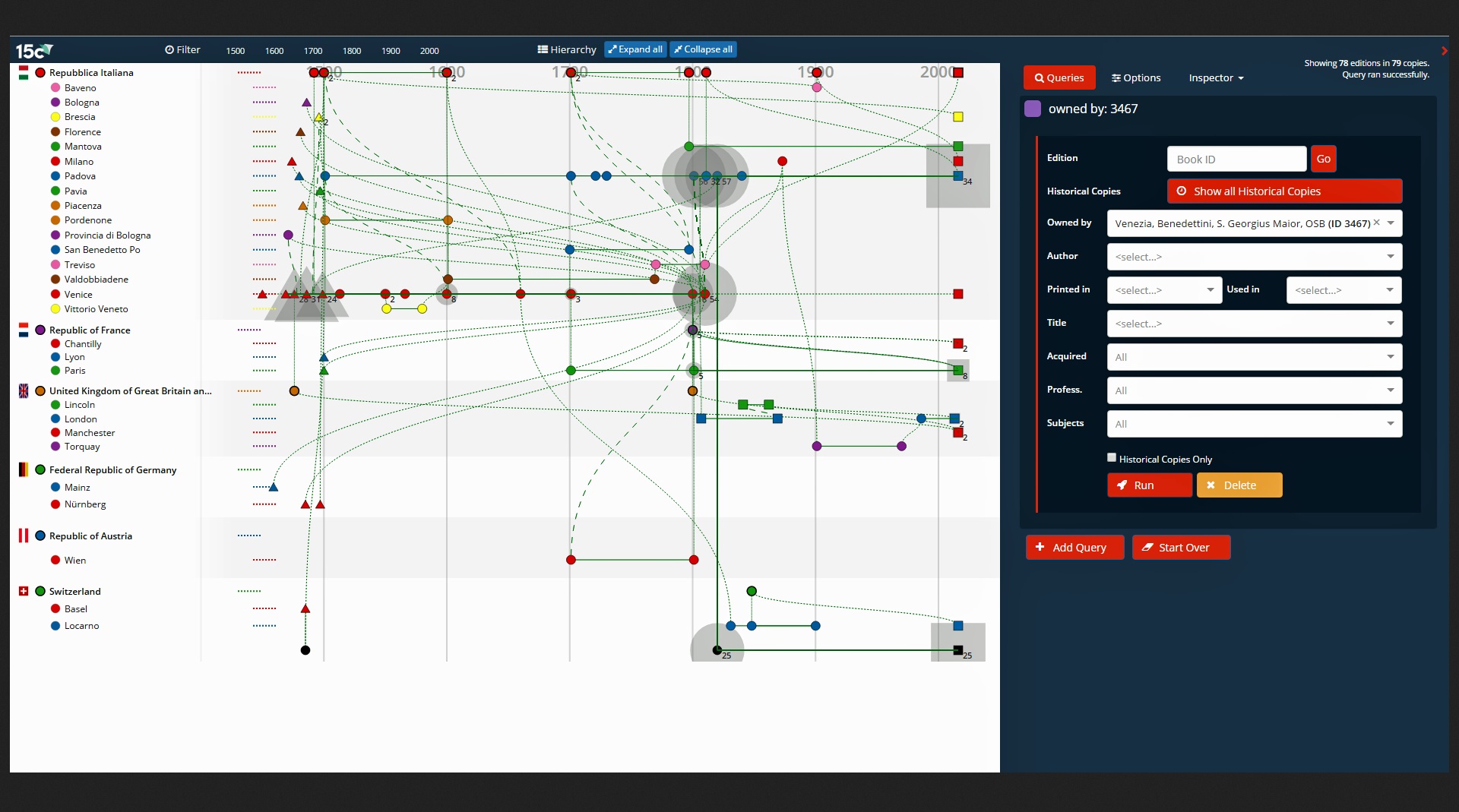Recording and research
Indexing: then and now
The editor and private scholar Ludwig Hain (1781–1836) was the first to compile a universal index of all incunables known to him. He recorded detailed information on the individual editions with the unique identifiers of the imprint. In addition, he described further characteristics such as format, typeface, form of typesetting, presence of woodcuts, etc. Hain's index (1826–1838) was for a long time fundamental for all incunables collections and catalogues. Until the second half of the 20th century, libraries referred to Hain without describing their own editions and copies.
Comparison of the record based on a Bible edition: Bible (German), Strasbourg: Johann Grüninger, 1485 (MUE Inc IV 5)
Today, the rules and regulations for cataloguing incunables are more complex, but are increasingly being standardised worldwide. In addition to the standardised bibliographical data, individual characteristics of the copy are also recorded.
Metacatalogues
Many collection institutions have set themselves the task to record their treasures according to the latest standards. These are presented in metacatalogues, which are freely accessible worldwide on the Internet, thus making research possible.
Two catalogues that complement each other very well and are among the best known are the Gesamtkatalog der Wiegendrucke (GW), which replaced Hain's catalogue, and the Incunabula Short Title Catalogue (ISTC). Both aim to be a world catalogue, but each has its own focus.
The editorship of the Gesamtkatalog lies with the State Library in Berlin. Since 1925 the alphabetically arranged articles "Abbey of the Holy Ghost" to "Hord, Jobst" were published in print. At the same time, all entries are available in an online database, into which the latest findings are constantly being incorporated. This catalogue contains detailed descriptions of all known incunables editions and indicates the locations of the copies.
The Incunabula Short Title Catalogue (ISTC), published by the British Library in London in cooperation with the Consortium of European Research Libraries (CERL), provides an overview and details of all incunable editions as well as on the known copies with their locations. Also linked are full-digitized copies of the respective editions.
Digitization
Thanks to comprehensive digitization initiatives, many incunables are now accessible on screen and enable research projects that would have been unthinkable in the past. For example, two incunables stored in different places can be digitally displayed side by side thanks to international image standards.
An exhibition at the Biblioteca Nazionale Marciana in Venice presented the current knowledge of incunables and their research aspects in 2018 – 2019. The exhibition is also virtually accessible ever since: Printing R-Evolution 1450 - 1500. Fifty Years that Changed Europe, Venice, 2018 - 2019.
The two copies of this devotional book differ only in this page: the woodcut was fitted into the type area on the left in the copy of the UB Bern and on the right in that of the UB Basel. Prints with such typesetting differences are referred to as variants (illustration: International Image Interoperability Framework, IIIF, in the Mirador Viewer).
Building on the technical developments, new research enterprises are increasingly developing. In the Material Evidence in Incunabula (MEI) project, characteristics of the physical copies are systematically described, e.g. ownership entries with location information, purchase prices, etc. From the sum of the entries in the MEI database, it is thus possible to visually represent information on the distribution of the books and their individual routes.

